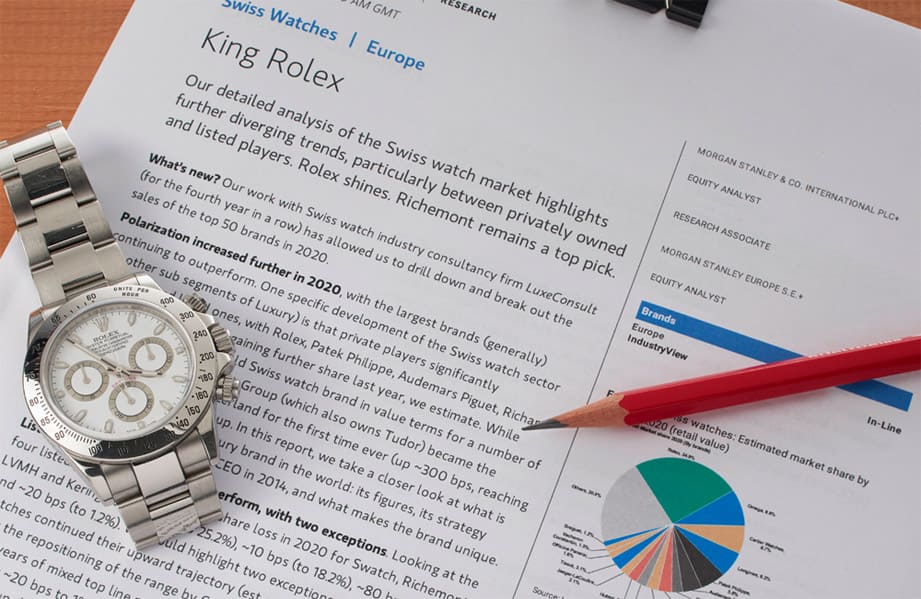Introduction
The world of horology, or watchmaking, is vast and intricately detailed. Within this realm, mechanical watches, which operate without the need for batteries, have stood the test of time due to their engineering brilliance. These watches come in two primary types: automatic (self-winding) and manual (hand-wound). While both types fall under the same category of mechanical watches, they differ in their inner workings, requiring different approaches to maintenance. Understanding these differences is key to ensuring the longevity and accuracy of the timepieces.
In this article, we will explore the fundamental differences between automatic and manual watches in terms of their mechanics and the maintenance required to keep them in optimal working condition. By examining the various components of each, we will shed light on the specific care each type of watch demands.
1. The Basics of Automatic and Manual Watches
1.1 What is an Automatic Watch?
- Self-Winding Mechanism: An automatic watch utilizes the movement of the wearer’s wrist to wind the mainspring. The movement of the rotor within the watch transfers kinetic energy to the mainspring, allowing the watch to function without needing to be manually wound.
- Internal Components: The automatic watch has a rotor that turns with the wearer’s wrist movements. This rotor engages the winding mechanism, which generates power for the watch to function.
- Power Reserve: Automatic watches have a power reserve, which is the amount of time the watch continues to run without movement. When fully wound, an automatic watch can typically run for 40–80 hours before it requires additional movement or winding.
1.2 What is a Manual Watch?
- Hand-Winding Mechanism: Unlike automatic watches, manual watches require the wearer to wind the crown regularly to generate power for the watch. The mainspring, when wound by the crown, stores energy that powers the movement.
- No Rotor: Unlike automatic watches, manual watches do not have a rotor or self-winding mechanism. Therefore, they must be wound by hand every day or after a period of non-wear.
- Power Reserve: Similar to automatic watches, manual watches also have a power reserve, typically ranging between 36 and 48 hours, after which the watch needs to be wound again to function.
2. The Maintenance Differences Between Automatic and Manual Watches
2.1 Maintenance of an Automatic Watch
- Winding Mechanism and Rotor Movement: One of the primary components of automatic watches that requires attention is the rotor. Because the rotor moves with the wrist’s motion, it is essential to ensure that it remains free-moving and does not become obstructed by dirt or debris.
- Lubrication: Automatic watches contain moving parts that rely on lubrication to function smoothly. Over time, the oils that lubricate the gears and other mechanical components may dry out, leading to increased friction and wear. Therefore, automatic watches require regular servicing (typically every 3-5 years) to maintain proper lubrication and ensure smooth operation.
- Power Reserve and Manual Winding: Although automatic watches wind themselves, it is a good idea to manually wind the watch if it hasn’t been worn for a few days. This ensures that the watch operates at peak performance when it is first worn again.
- Rotor and Movement Care: The rotor inside an automatic watch is delicate and must be handled with care. If the rotor is damaged or fails, the watch will no longer wind automatically and must be manually wound. Regular servicing ensures that the rotor continues to work optimally.
2.2 Maintenance of a Manual Watch
- Regular Winding: The most significant maintenance task for a manual watch is regular winding. Without daily winding, the watch will stop functioning once the power reserve is exhausted. It is important to wind the watch gently using the crown, avoiding over-winding, which could damage the mainspring.
- Power Reserve Considerations: A manual watch needs to be wound regularly to maintain the power reserve. If the watch is not worn daily, it may require a winding session to keep it running smoothly.
- Lubrication: Like automatic watches, manual watches have intricate movements that need regular lubrication to function correctly. Manual winding itself does not require lubrication, but the moving parts inside the watch need servicing every few years to ensure that the watch continues to run smoothly. This involves cleaning and re-lubricating the gears, escapement, and balance wheel.
- Crown and Winding Mechanism: The crown in a manual watch is used to wind the mainspring and set the time. Over time, this component can wear down if used too frequently or harshly. Regular care of the winding mechanism is crucial to prolonging the watch’s lifespan.
3. Common Maintenance Practices for Both Types of Watches
3.1 Cleaning and Polishing
- Exterior Cleaning: For both automatic and manual watches, it’s essential to clean the watch regularly. Sweat, dust, and other environmental factors can cause wear and tear. Use a soft cloth or microfiber cloth to gently wipe the case, strap, and glass.
- Water Resistance Checks: Regular checks of water resistance are essential for any watch. For automatic and manual watches with water resistance features, ensure the gaskets and seals are intact to prevent moisture from entering the watch. It’s advisable to test water resistance every 1–2 years.
3.2 Regular Servicing
- Frequency of Servicing: Both automatic and manual watches require servicing at intervals of 3–5 years. During servicing, the watchmaker will disassemble the movement, clean and lubricate all parts, and check for any worn-out components.
- Repairs and Part Replacements: Sometimes, the wear and tear of daily use can result in the need for repairs or part replacements. Whether for an automatic or manual watch, parts like the mainspring, gears, or escapement may need to be replaced after years of use.
3.3 Storage Considerations
- Storing Watches When Not in Use: For automatic watches, storage can be crucial. If an automatic watch is not worn for a long period, it may stop. Using a watch winder can help maintain the watch’s winding, preventing the need for manual winding.
- Manual Watch Storage: Manual watches should be stored in a cool, dry place away from direct sunlight. A watch box or case with proper cushioning will protect the watch from scratches and shocks.

4. Specific Challenges in Maintaining Automatic vs. Manual Watches
4.1 Automatic Watches: Challenges and Considerations
- Rotor Wear and Tear: The rotor in automatic watches is in constant motion when worn, and prolonged use may result in wear over time. If not serviced, this could lead to a malfunction in the self-winding mechanism.
- Power Reserve Issues: If the automatic watch is not worn regularly or its power reserve is not sufficient, the watch may stop. Ensuring proper winding and usage helps maintain the accuracy and functionality of the watch.
- Magnetism and Interference: Automatic watches, like manual watches, can be affected by magnetic fields, which can disrupt the accuracy of the movement. Regular checks and adjustments by a watchmaker may be necessary to mitigate this.
4.2 Manual Watches: Challenges and Considerations
- Over-Winding: One of the main risks when maintaining a manual watch is over-winding. This occurs when the crown is wound beyond the point where the mainspring is fully tensioned. Over-winding can lead to damage in the mainspring or winding mechanism.
- Winding Friction: The act of winding the watch itself generates friction. If the crown or winding mechanism is not properly maintained, it can wear down, causing difficulties in winding and timekeeping.
5. Best Practices for Ensuring Longevity of Both Watch Types
5.1 Routine Inspections and Monitoring
- Check for Accuracy: Periodically check the timekeeping accuracy of both automatic and manual watches. This can help detect potential issues early, before they lead to a need for more serious repairs.
- Professional Help: For complex issues with either an automatic or manual watch, it’s best to seek professional help. Watchmakers can perform a thorough check-up, clean the components, and make adjustments as necessary.
5.2 Protecting the Watch from Shocks and Extreme Conditions
- Avoid Shocks and Bumps: Both automatic and manual watches have delicate movements. Protecting your watch from extreme movements, vibrations, and impacts is crucial for preserving its longevity.
- Avoid Magnetized Objects: Keep both types of watches away from strong magnetic fields, as this can interfere with their movements and cause inaccuracy.
6. Conclusion
While automatic and manual watches share a common mechanical foundation, the maintenance requirements for each type vary significantly. Automatic watches rely on the movement of the rotor to wind themselves and require less daily interaction but still need regular servicing to ensure smooth operation. Manual watches, on the other hand, demand daily winding and more attention to their hand-wound mechanics. Regardless of the type, both watches require regular care, servicing, and proper storage to preserve their longevity and precision.
Understanding these differences is key to becoming a responsible watch owner and ensuring that your mechanical timepiece continues to function for years to come. Whether you own an automatic or manual watch, giving it the proper attention will allow you to enjoy its beauty and functionality for generations.





































